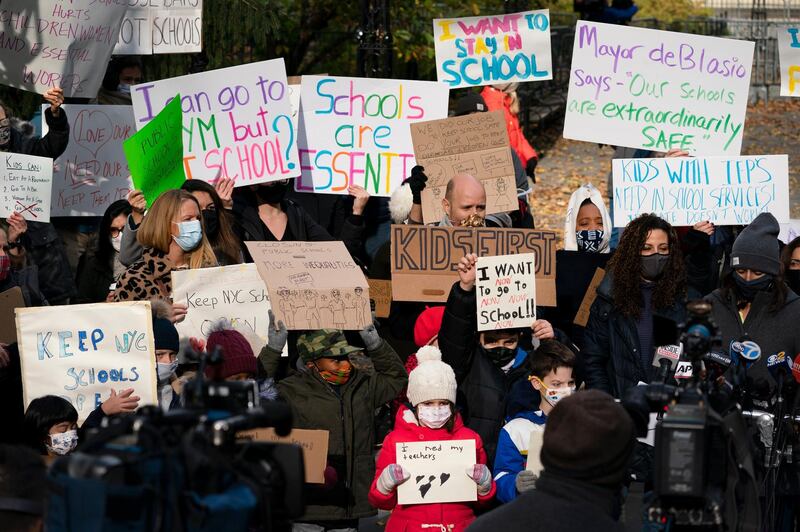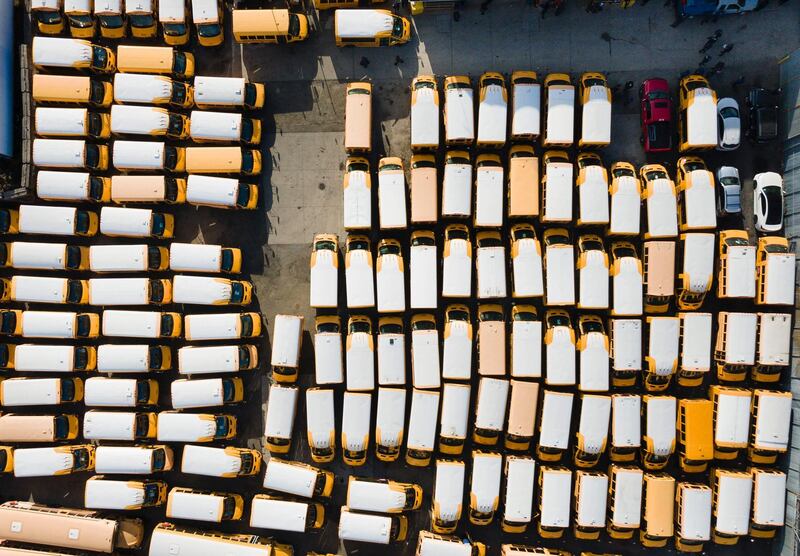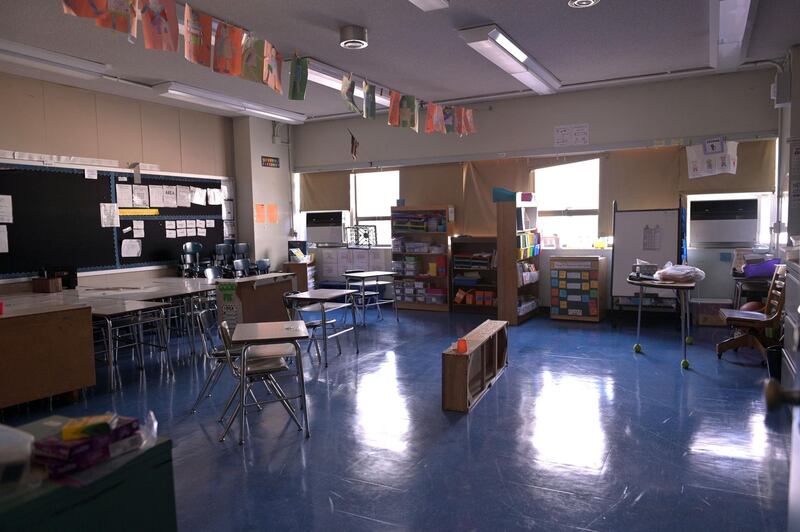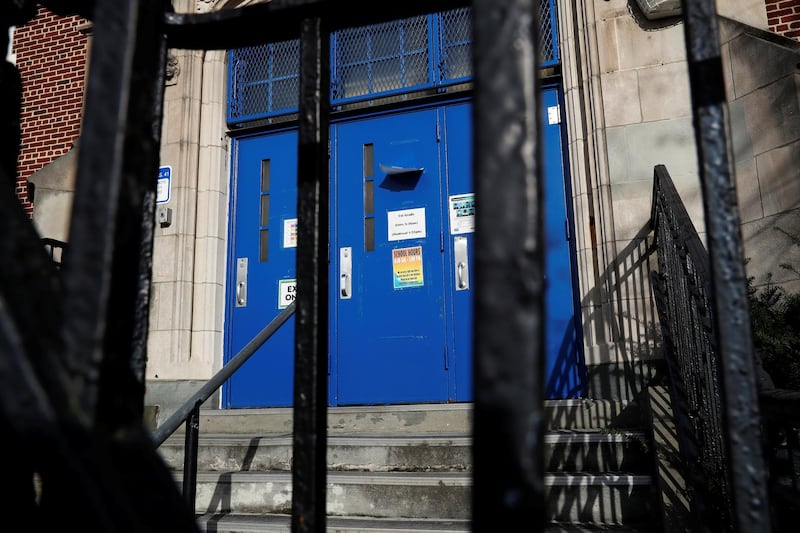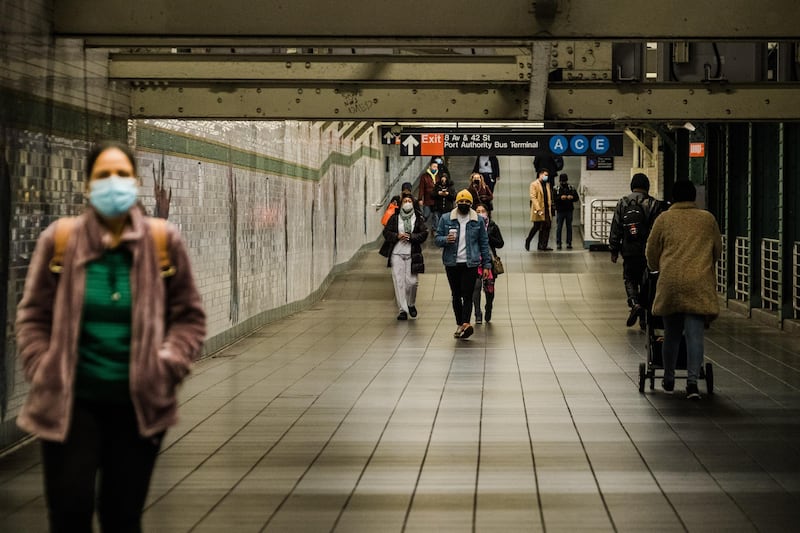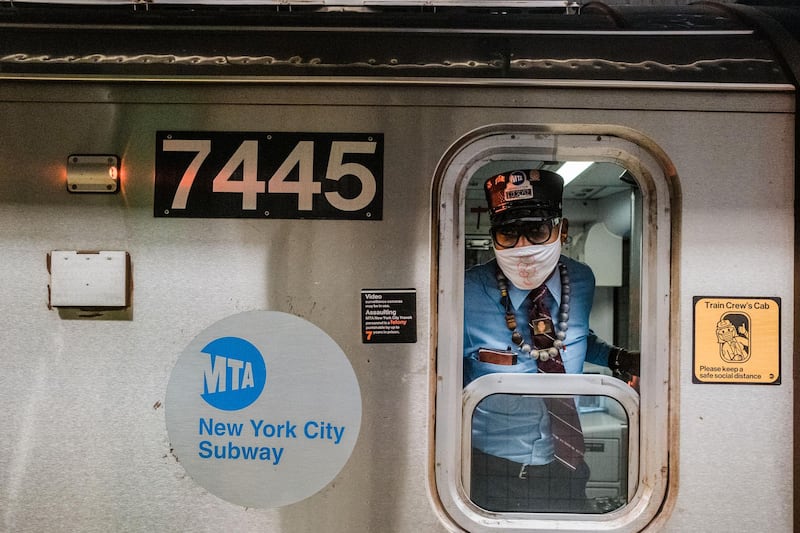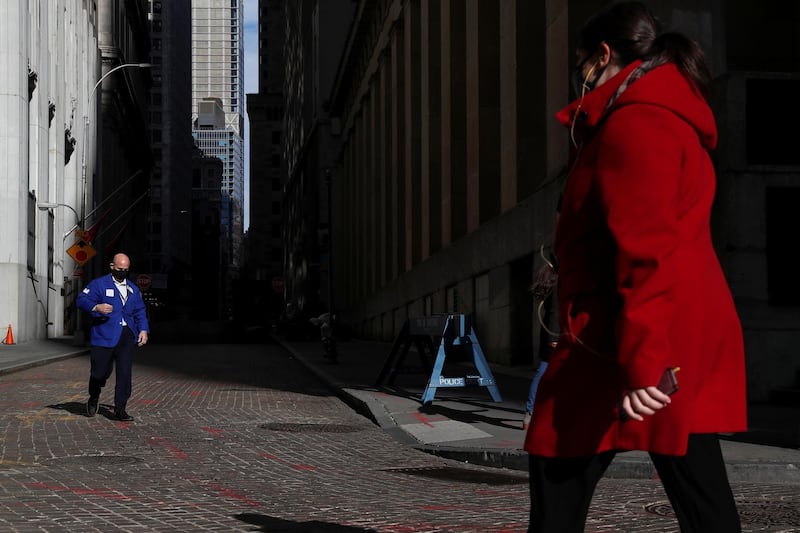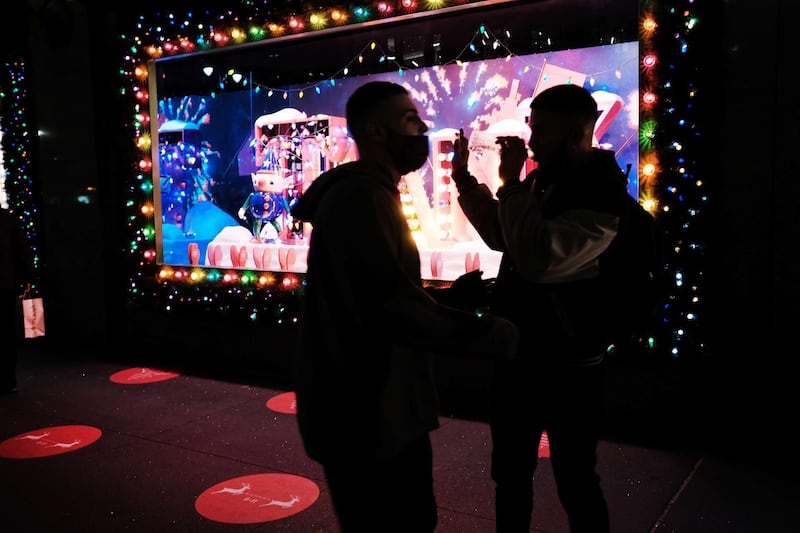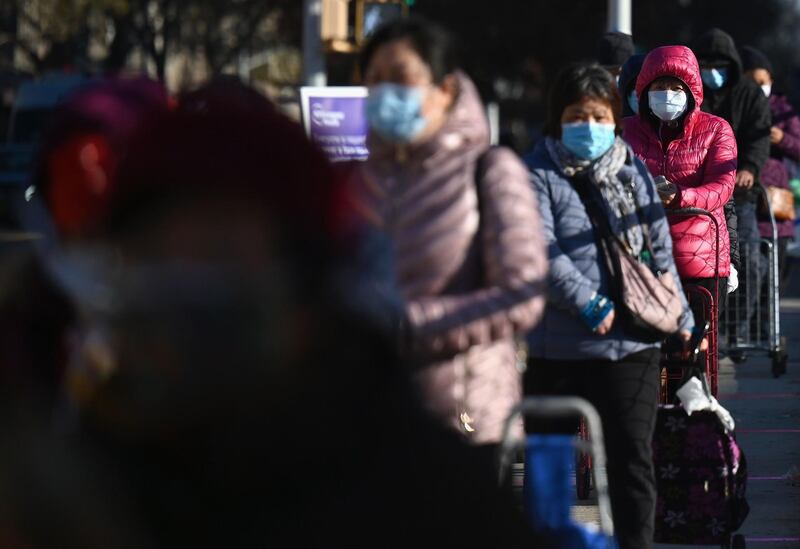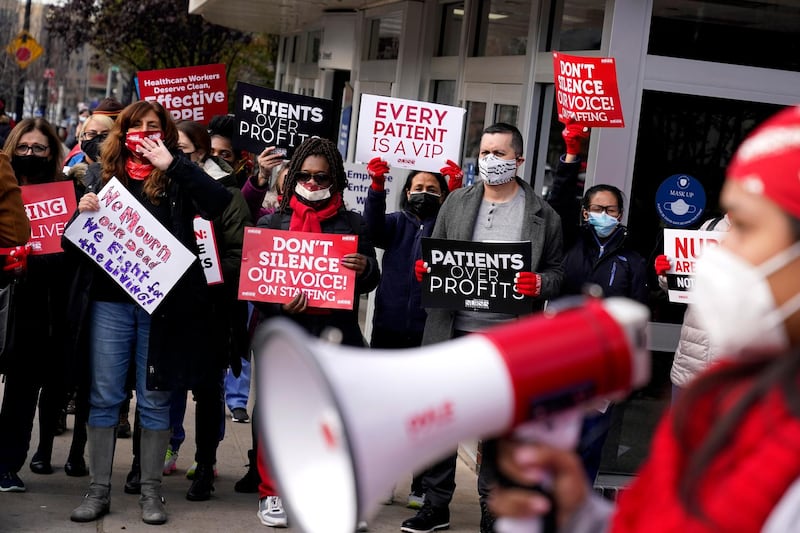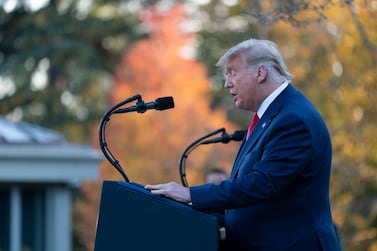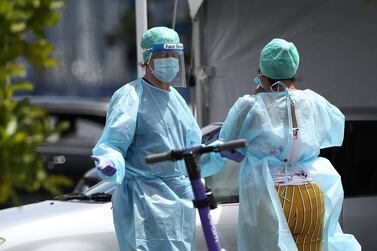In normal times, about 20,000 visitors pour through the Great Hall entrance to the Metropolitan Museum of Art daily, their clamour reverberating off the limestone chamber's dramatic arches, mosaic floor and vast, saucer-shaped domes.
This week, nine months after New York City recorded its first case of coronavirus, the neoclassical palace of art on the Upper East Side is a changed place. Handfuls of guests wearing face masks drift past the Rembrandts and Roman statues in near silence.
At least the famous museum has reopened, though at a quarter of its former capacity. The pandemic has closed offices, Broadway theatres, schools and sports arenas, prompting speculation that America's energetic skyscraper metropolis will never recover.
“New York is definitely not dead. You can't kill New York,” insisted Vern Calhoun, 60, a theatre worker, after viewing the Met’s new fashion show, a collection of outfits by Alexander McQueen, Yves Saint Laurent and others.
Mr Calhoun told The National about long days in his upper Manhattan apartment with little to do but "talk to the plants". A once-vibrant social life dried up; friends could not gather for his six-decade marker in June, he lamented.
NYC schools shut as coronavirus cases spike
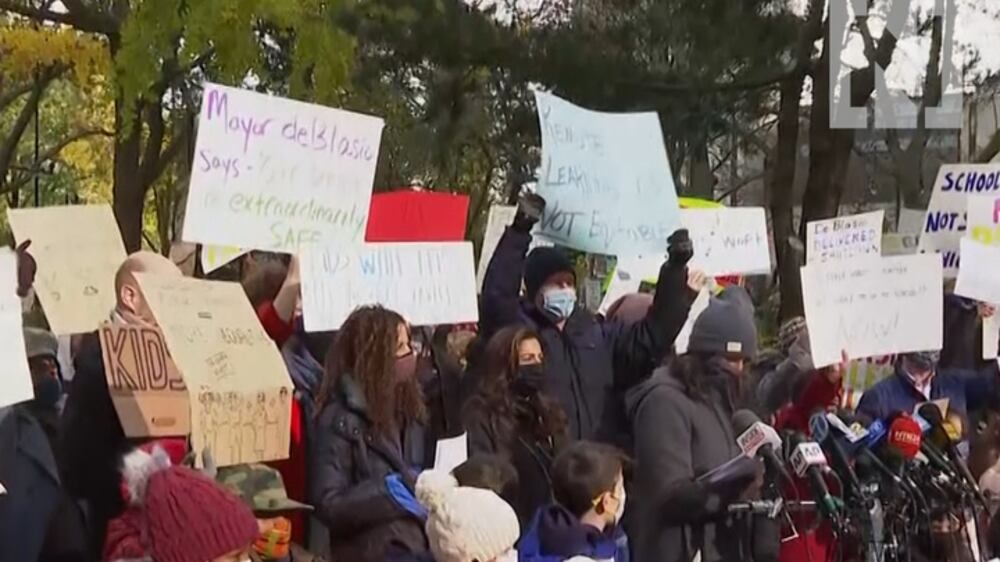
"Given everything that the city has been through over the centuries, it hurts right now. And it's going to take a long time for it to get back to what it once was, but it'll come back."
In April, New York City became the global centre of the pandemic. Governor Andrew Cuomo was closing schools, restaurants and shows as emergency hospital ships docked and bodies piled up in morgues.
The city began lifting restrictions in June. When the Met reopened in August, museum president Daniel Weiss said the move could address the "uncertainty, isolation and grief" that had affected about eight million New Yorkers.
But the pathogen was not done with New York. A recent increase in cases sent officials scrambling again. Schools were closed this week and New Yorkers face a deadly winter surge of new Covid-19 infections before any long-awaited vaccine is rolled-out.
So far, the city has recorded about 300,000 Covid-19 cases and more than 24,000 deaths.
The economic toll has been great. The midtown skyscraper business district is desolated, commuting workers remain loath to chance subway rides. Double-decker sightseeing buses and ferries to the Statue of Liberty are nearly empty.
A new forecast by NYC & Company suggested that New York, once among the world's top tourist hotspots, will not have anything like the 66.6 million foreign visitors it received last year until at least 2025.
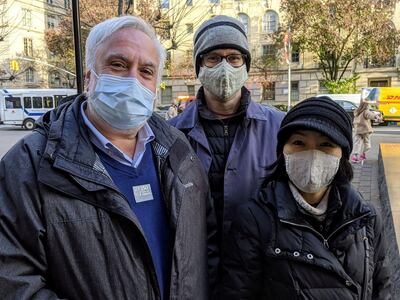
Last month, the city unemployment rate of 14.1 per cent was more than double the national rate. Official figures show that 300,000 New Yorkers have left, though the real scale of the exodus is likely much larger. Property values in parts of Manhattan have dropped by half.
Mr Calhoun says his friends from New York’s shut theatres are seeking jobs in other industries, expecting closures well into 2022. “It’s a tough time,” he said. “A lot of people have left. They've gone home, if they still have a home to go to.”
For James Altucher, a podcaster and entrepreneur who left New York for Florida, the economic slump, closure of colleges, restaurants and Broadway shows led to his grim conclusion in a widely-shared blog post that “NYC is dead forever”.
The forecast prompted a backlash, including from Jerry Seinfeld, a Syrian-American comedian, who wrote in The New York Times that the city's "energy, attitude and personality" would never be substituted by online events.
"The true greatness that is New York City is beyond rare … it will sure as hell be back," Mr Seinfeld wrote.
The coronavirus pandemic is not the first time that doomsayers have augured New York's demise. Similar predictions followed the devastation of the 9/11 attacks, the 2007-8 financial crisis and Hurricane Sandy in 2012.
But for Andrew Chandler, 54, a web designer who also visited the Met this week, the pathogen has wreaked more damage than the hijacked jets that toppled the World Trade Centre tower blocks in 2001.
"Nine-eleven was something that people came together for. It was localised and businesses didn't have to close," he said. "With [Covid-19], everybody has to shelter in place and work from home for over a year."
Mr Chandler says he stayed indoors for months, working from his apartment after the virus hit, but now ventures into the city. The roll-out of vaccines by Pfizer and Moderna will speed up the recovery, but remote working has changed city life for good, he said.
"The business of work and going into an office is going to change somehow after this is over and the vaccine comes out," Mr Chandler said. "Whatever happens, New York is going to be a different place to what it was."
